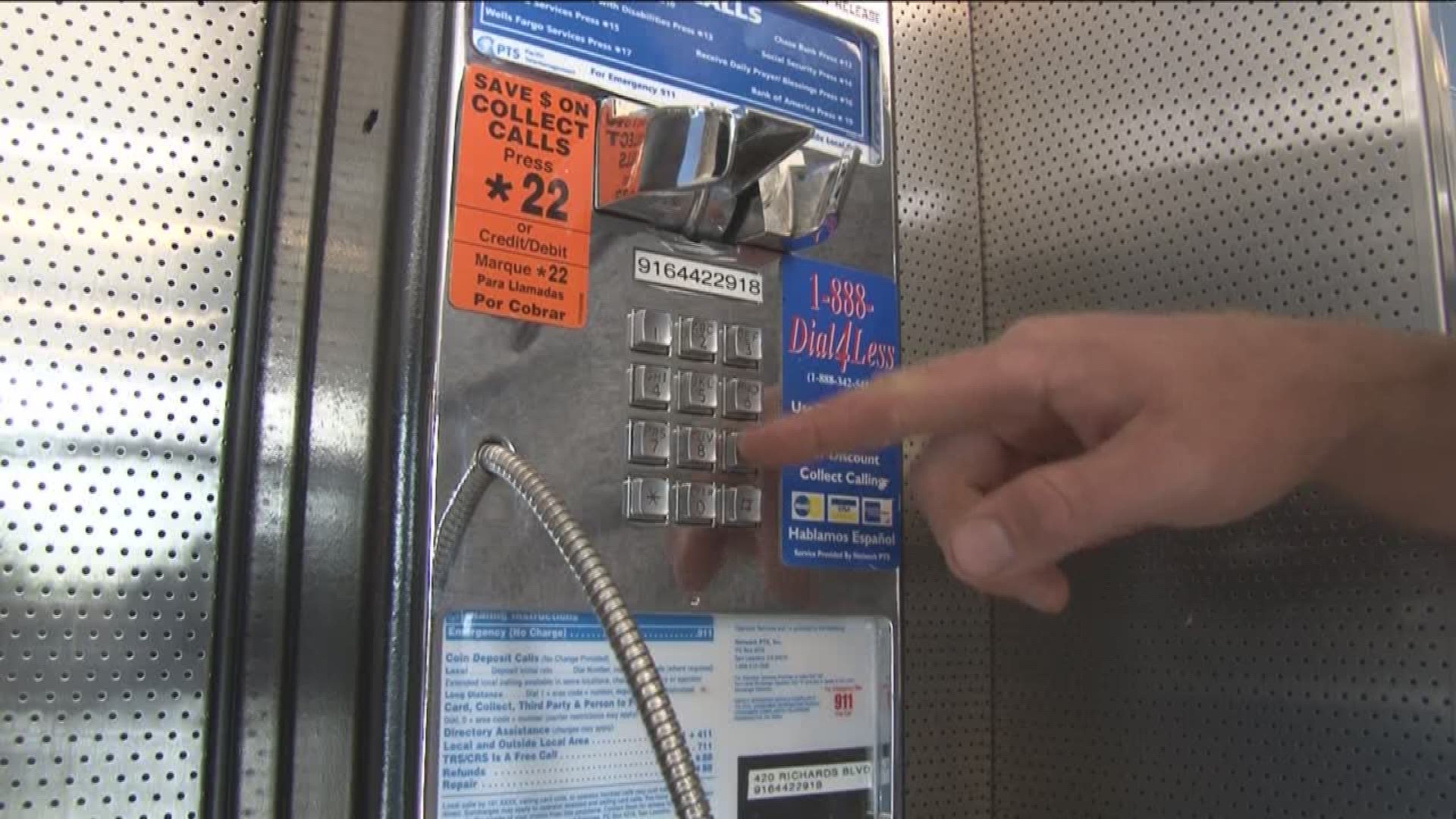If “Video Killed the Radio Star” in the 1980s, cell phones said “Bye, Bye, Bye,” to the pay phone in the 2000s.
Today only 50 remain of the 5,000 Sacramento had in the mid-1990s during the peak of the pay phones’ ascendency.
Two of these are to be found at the Sacramento Greyhound terminal, with usage intermittent as passengers arrive and depart.
“The only reason I am using the pay phone is because my cell phone is broken,” one passenger said. “I actually forgot how to use a payphone.”
The first pay phone was installed by William Grey in 1889, and by the 1960s there were a million nationwide. Early examples of the pay phone can be seen at The Telephone Museum in Roseville. Curator Frank Alva likes to show off the old wooden booth with a sliding door.
“In the 1920s calls were 5 cents,” Alva said. “Today that would be about 71 cents.”
Pay phones were big business. By the late 1990s, as cellular phones were beginning their ascent, there were more than 2.6 million pay phones in the United States.
“Pacific Bell, which is part of AT&T, had a monopoly over pay phones until the 1985 breakup,” Alva said.
In 1985, the federal government deregulated the pay phone business to break up the Pacific Bell monopoly, opening the door for just about anyone to own a pay phone. That year, Thomas Keane and Michael Zumbo started Pacific Telemanagement Services (PTS), now the largest pay phone company in United States.
“We were competing against giants like Bell in the Bay area,” Zumbo said. “Now we are sort of the last man standing in the pay phone business.”
In the early to mid-2000s when big companies like AT&T and Verizon started selling off their pay phones, Pacific Telemangement Services snapped them up. At their peak, PTS owned more than 100,000 nationwide. Today they operate around 25,000.
Behind the PTS main warehouse in Hayward is a pile of ‘retired’ payphones.
“This is the junkyard, as some call it,” Zumbo said. “Our warehouse used to have a lot more phones. Unfortunately, there are a lot less. The state of California used to have 35,000 payphones, now they have 6,000.”
Making matters worse, pay phone parts are hard to come by. PTS keeps its stash of payphone parts under lock and key in a large storage cage.
“You have to repair these parts. You can’t get new ones,” Zumbo said.
The payphone business might seem like it’s dying, but PTS is making a profit.
“Last year 15 million calls were completed on our phones,” Zumbo said.
That’s a nice profit considering the going rate for a 4-minute call is 50 cents. To make a profit, each phone only needs to make 100 calls a month.
“We’re making enough to stay in business, but we are looking to the future,” Zumbo said.
Hurricane Sandy might have shown a path to the future of pay phones. After the storm hit, cell service was jammed in New York City and the only way to call out was on a PTS pay phone. PTS saw an opportunity and ran with it.
“A year later there was still no connectivity so we hooked up fiber to our pay phones,” Zumbo said. PTS is now in the process of adding Internet to all their pay phones which include WiFi hotspots.
The pay phone as we know it might be dying, but the business is evolving. Someday your cell phone might depend on the pay phone hot spot.

